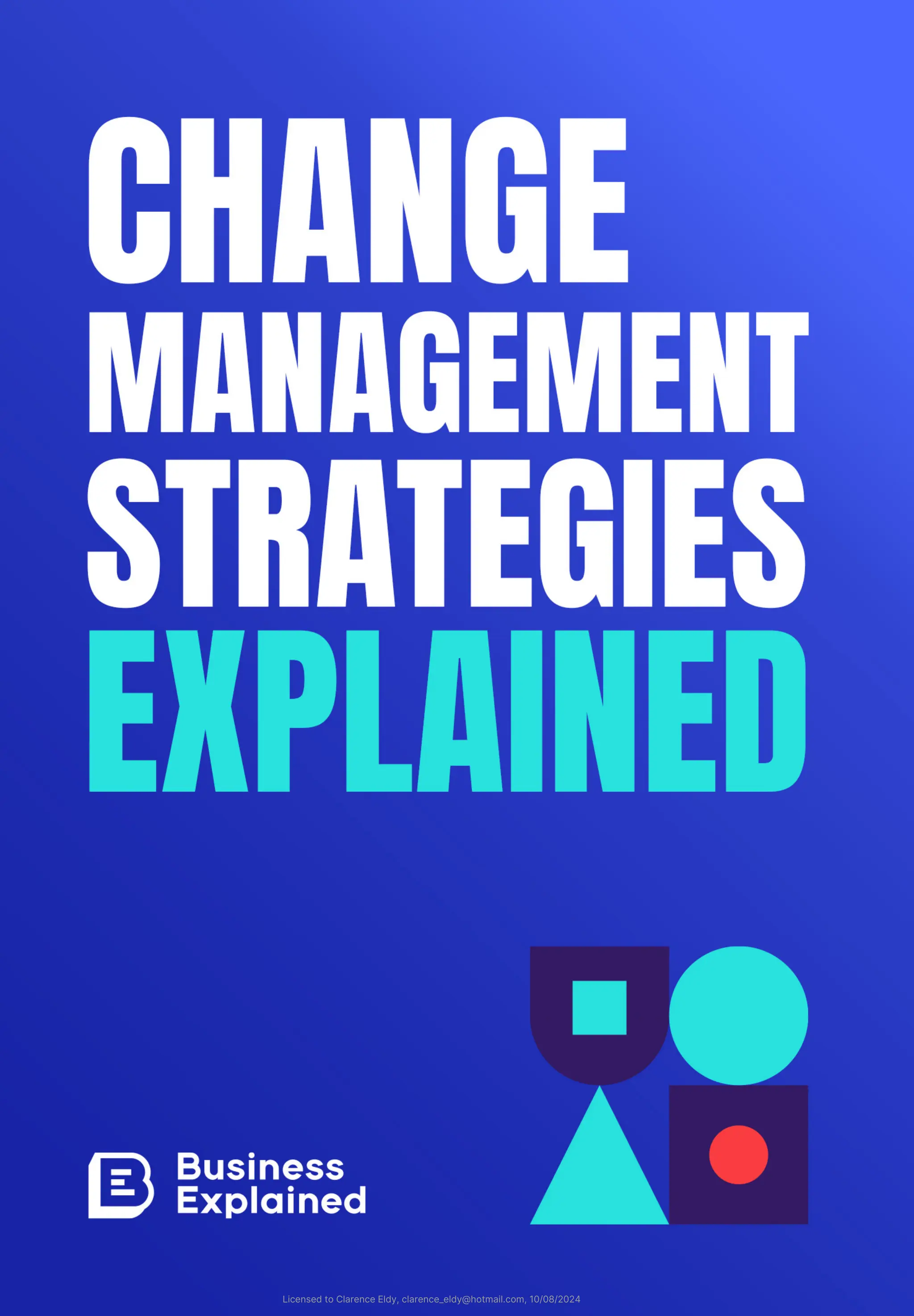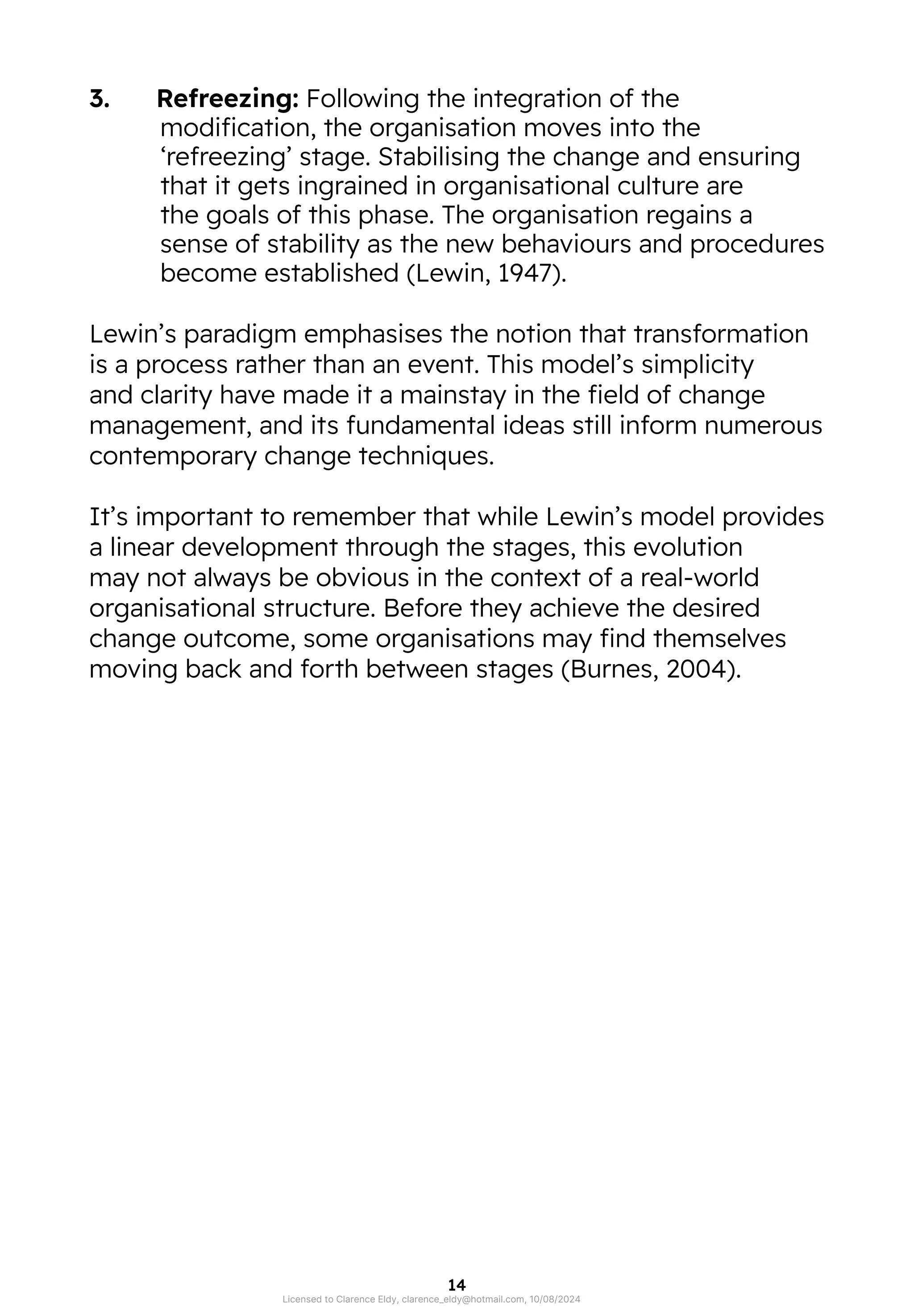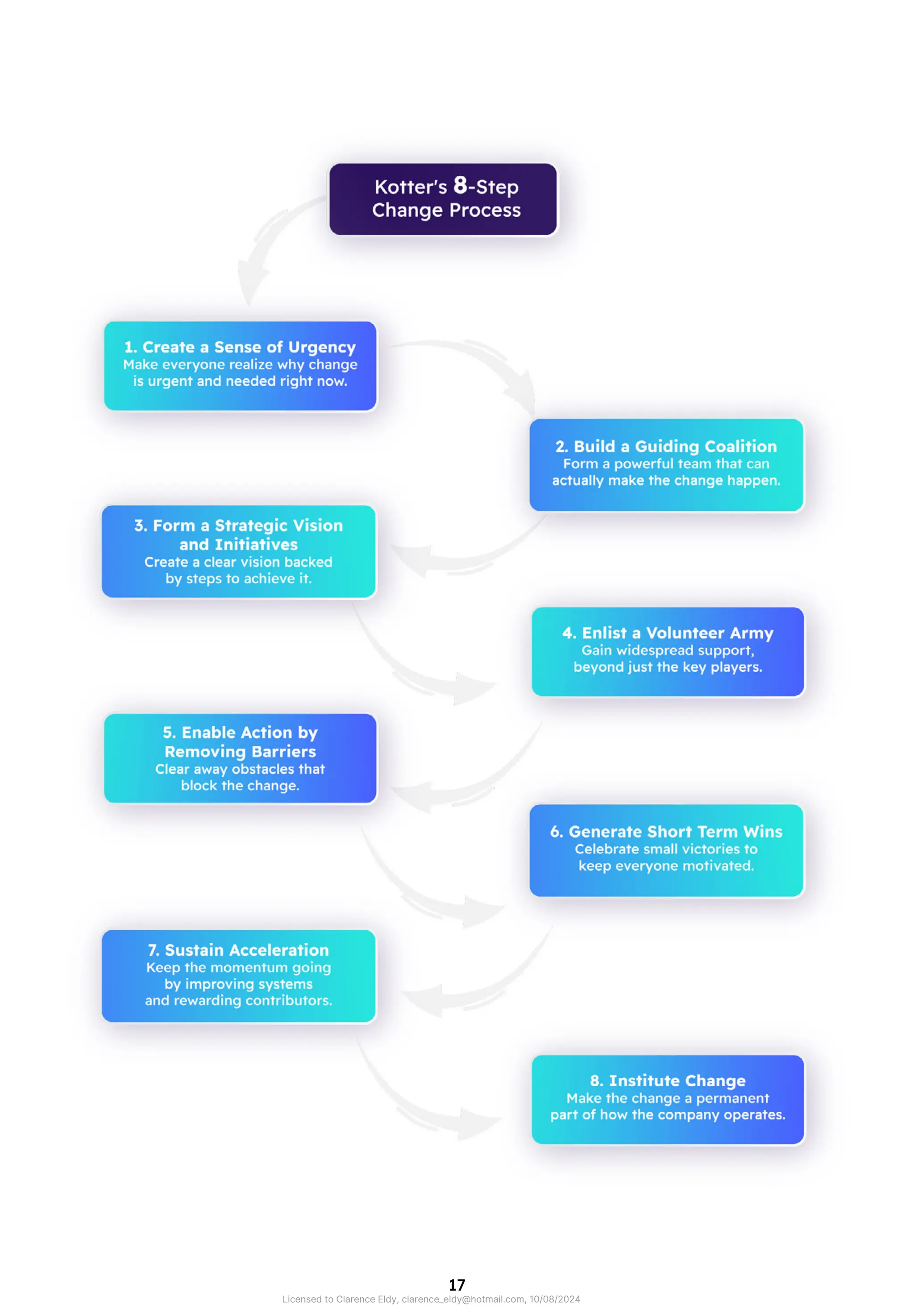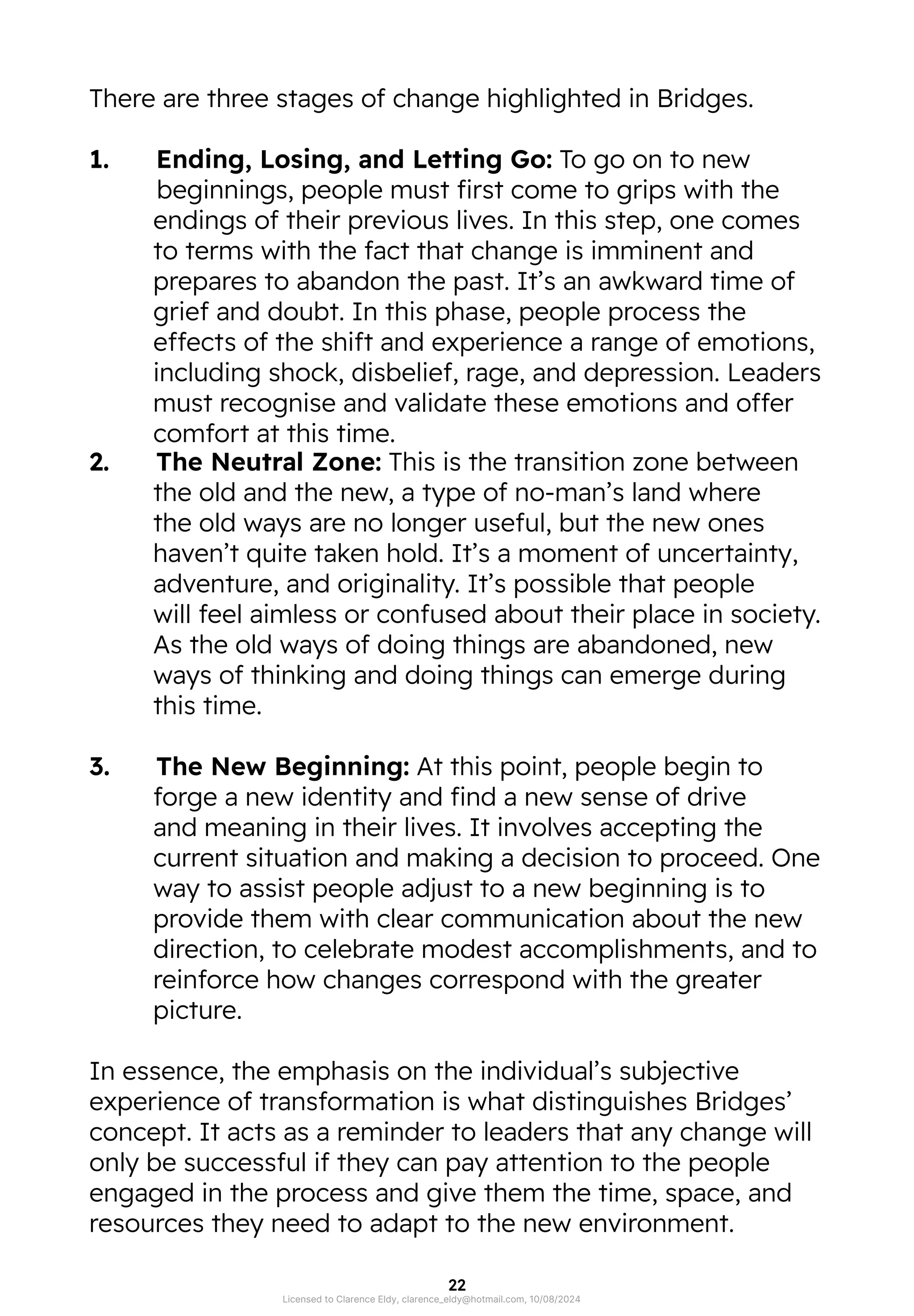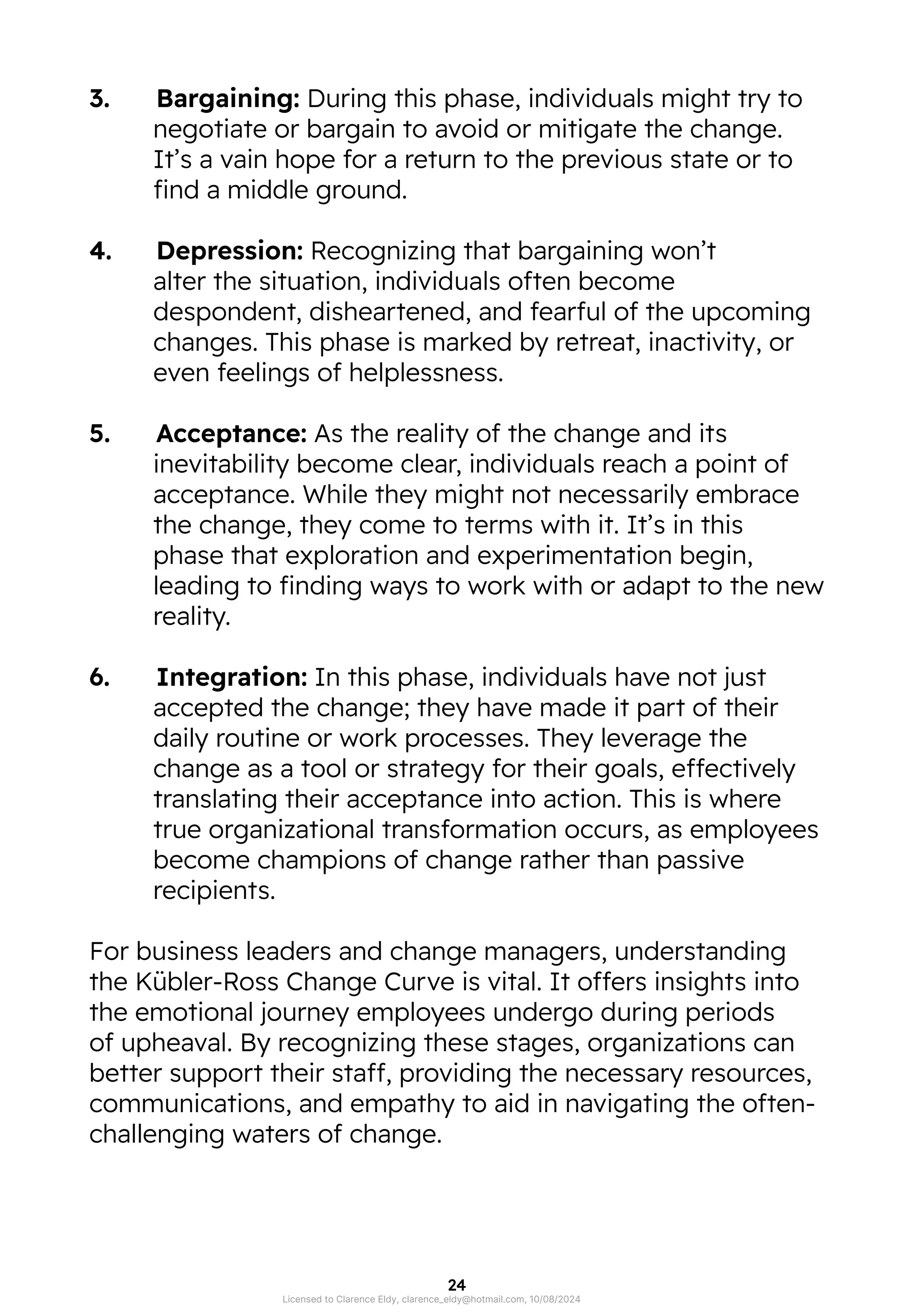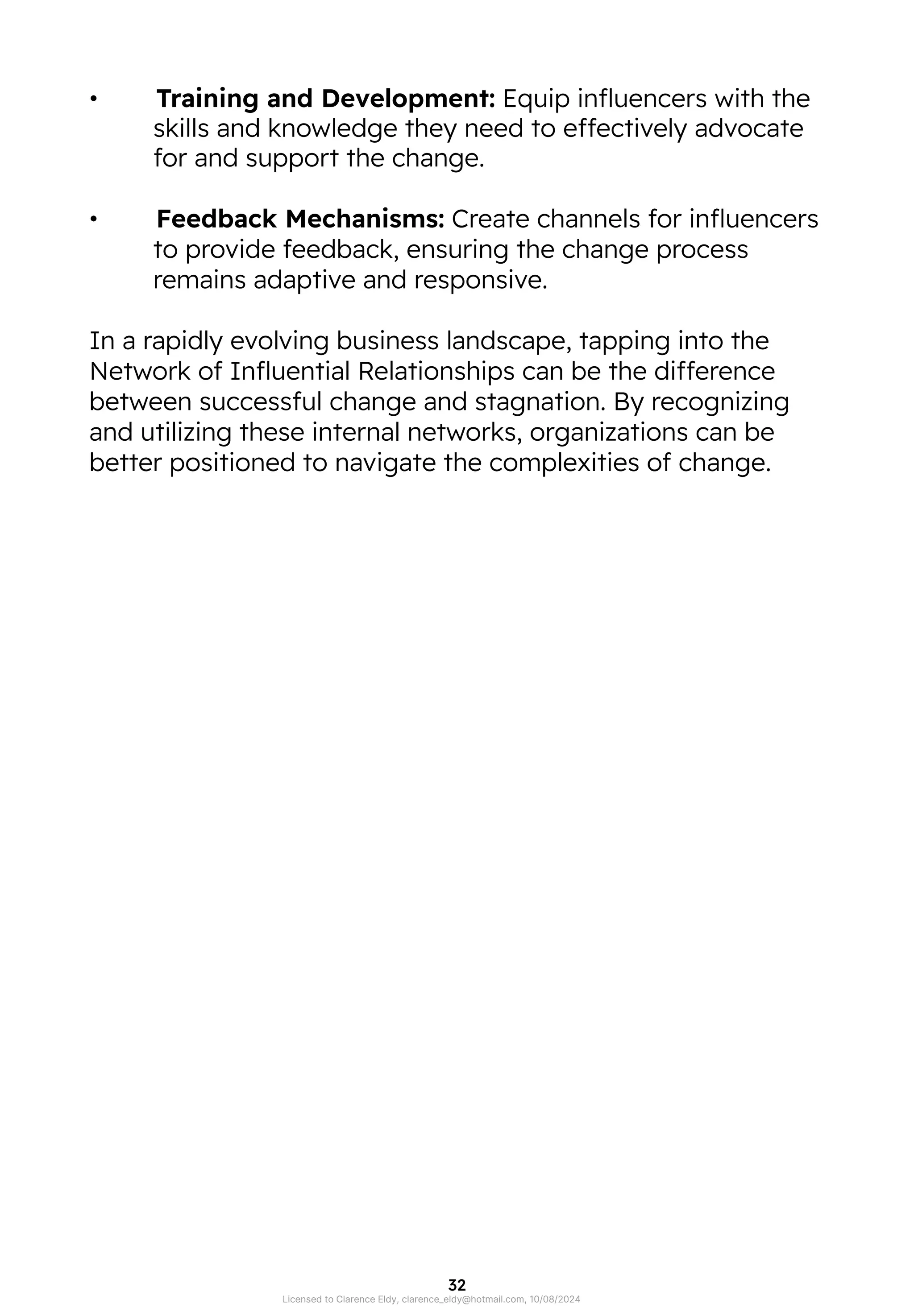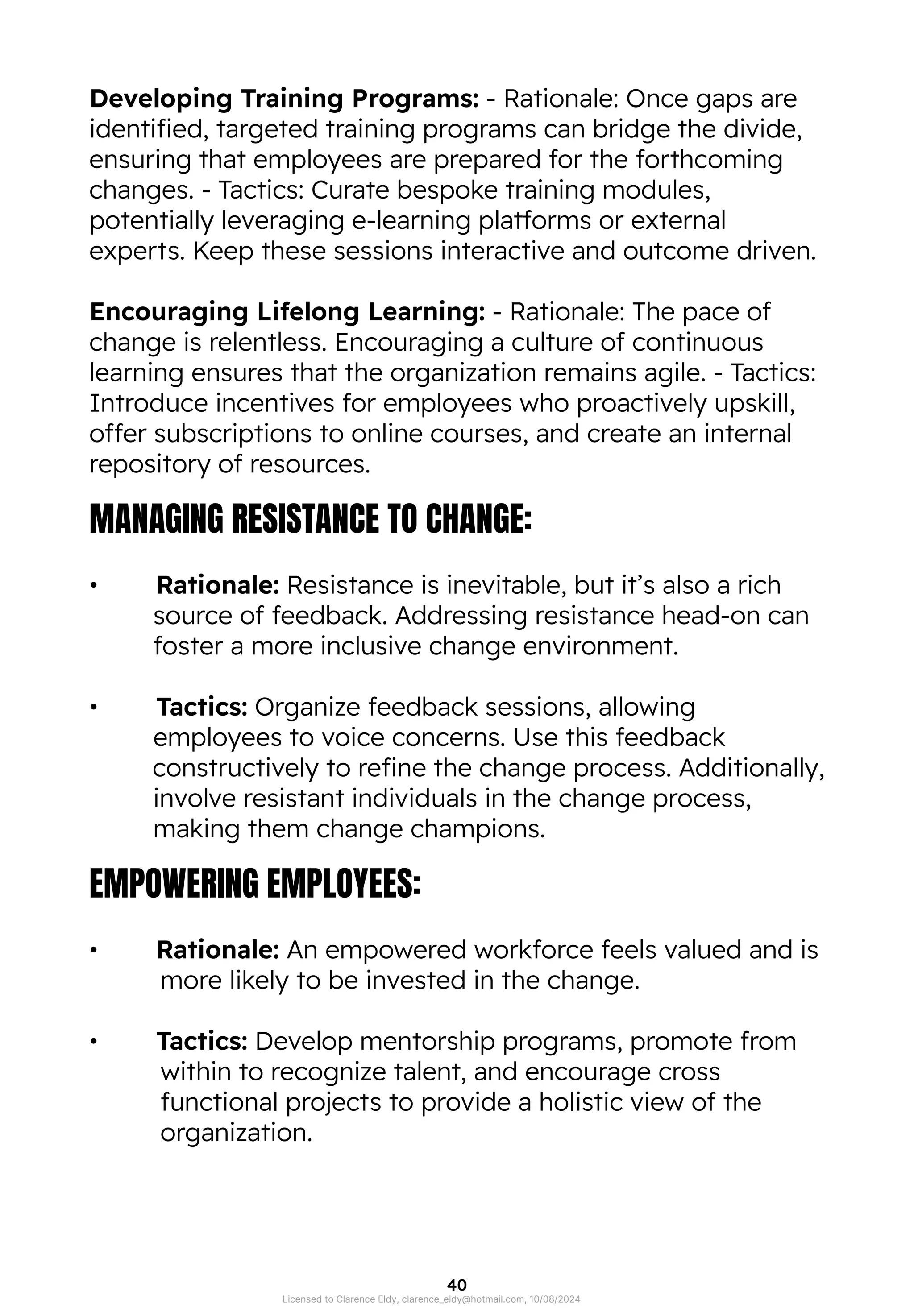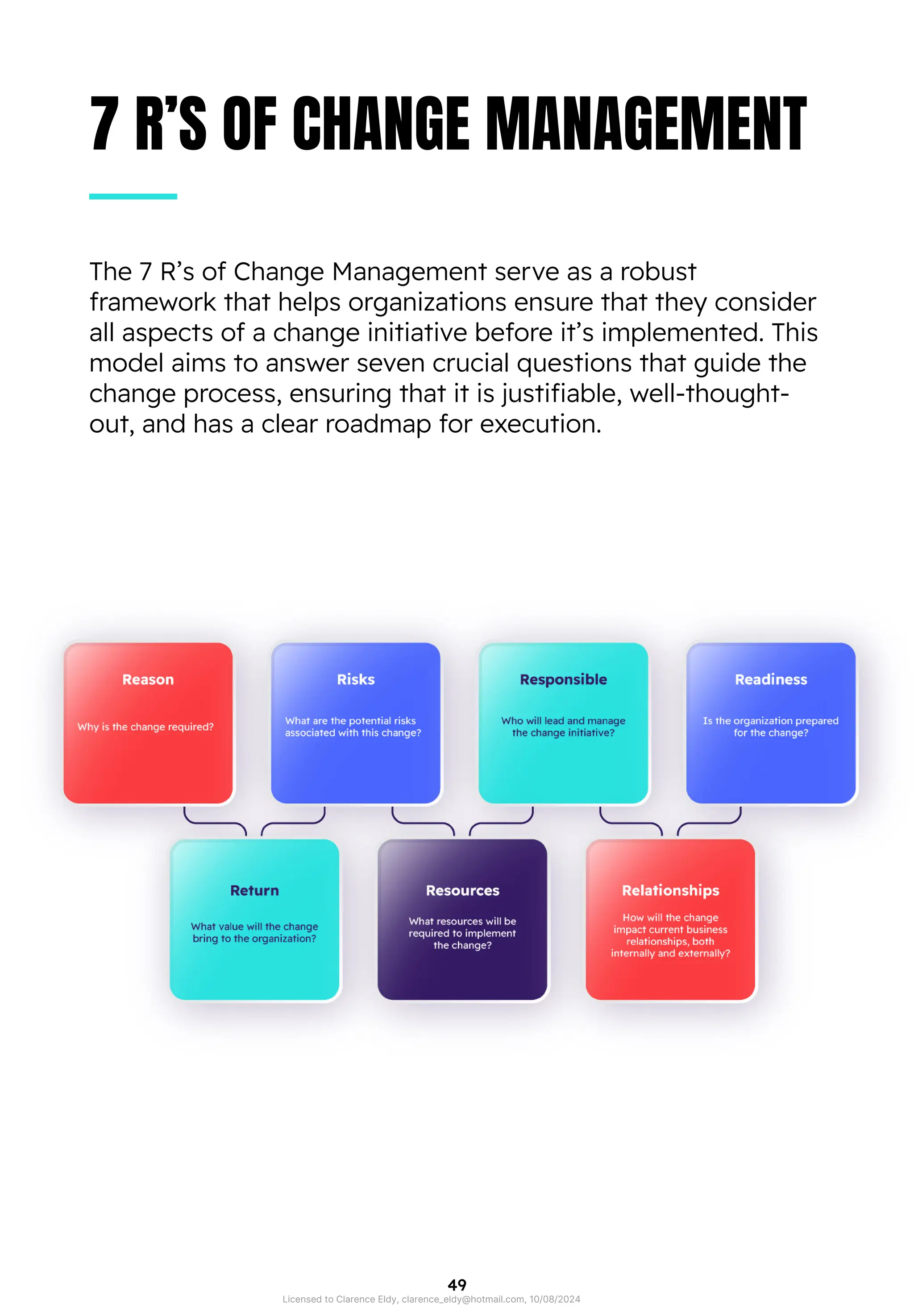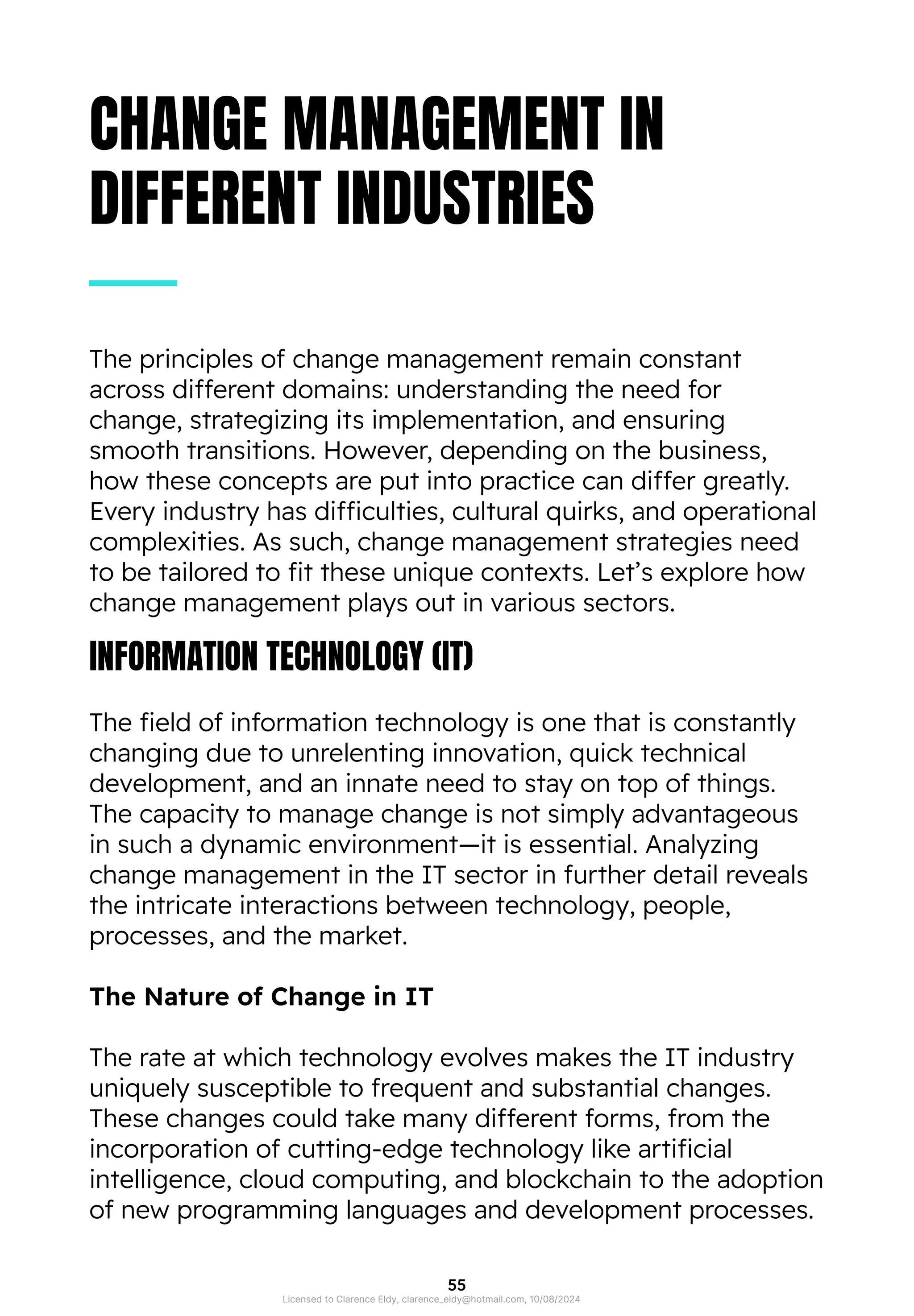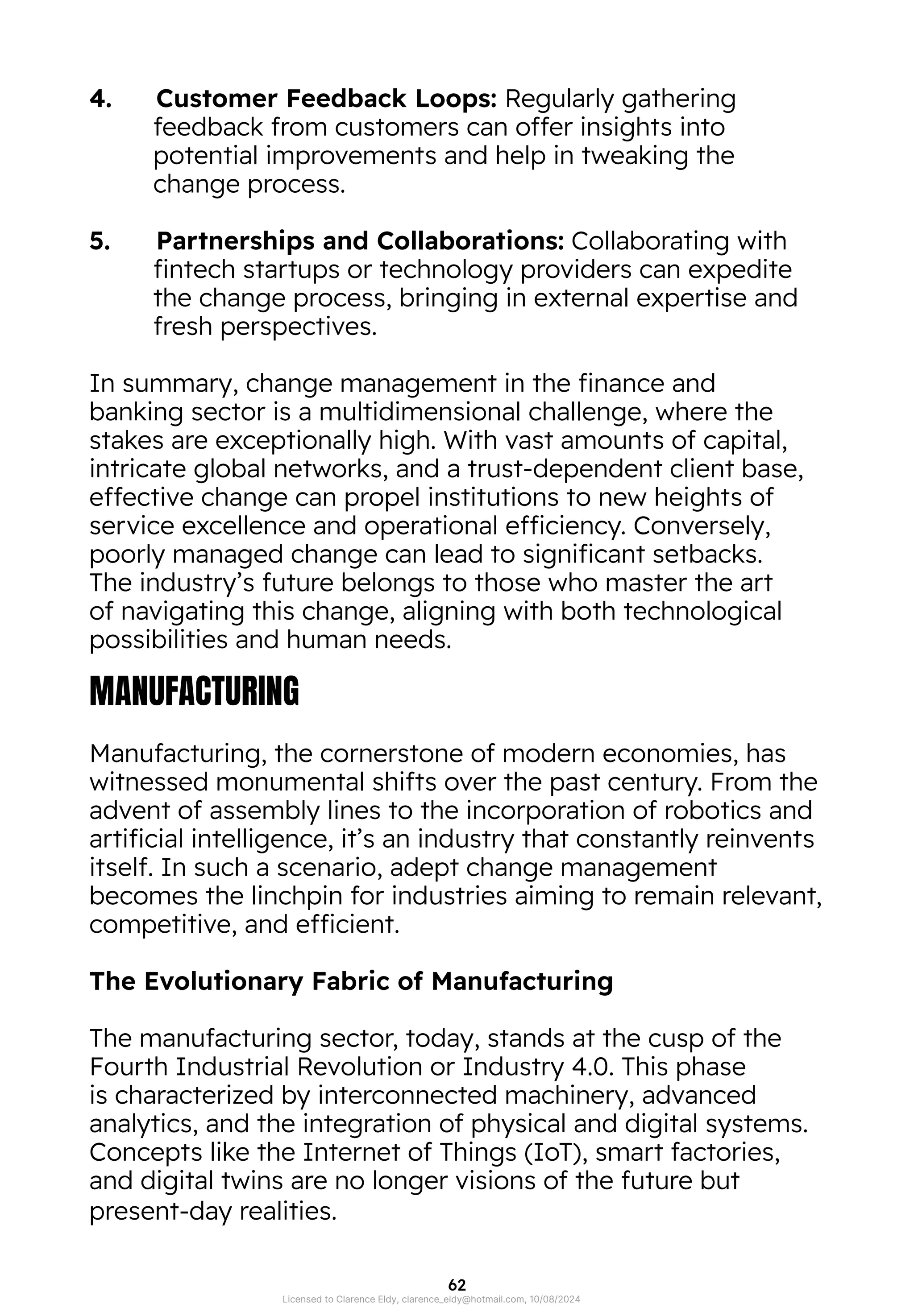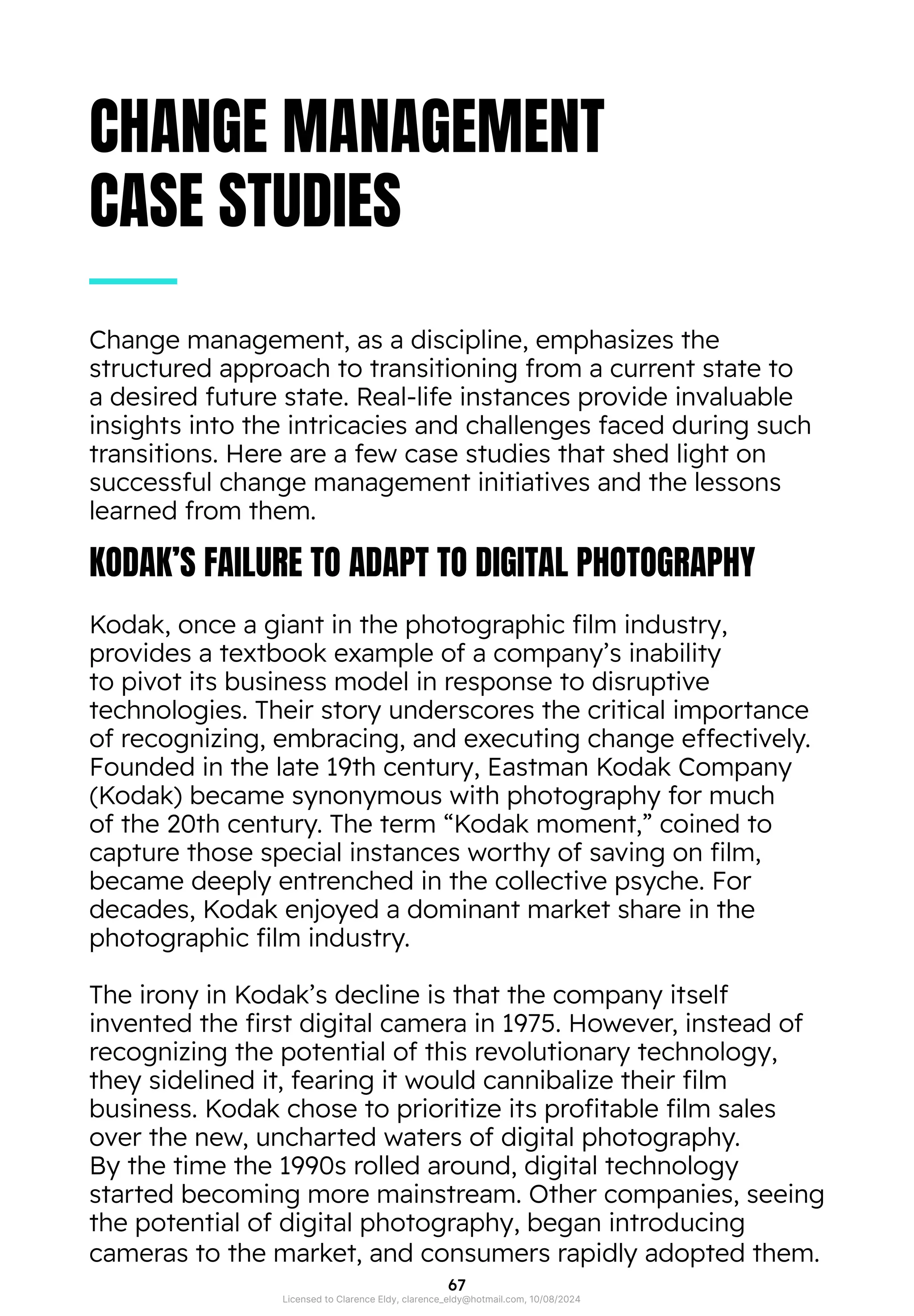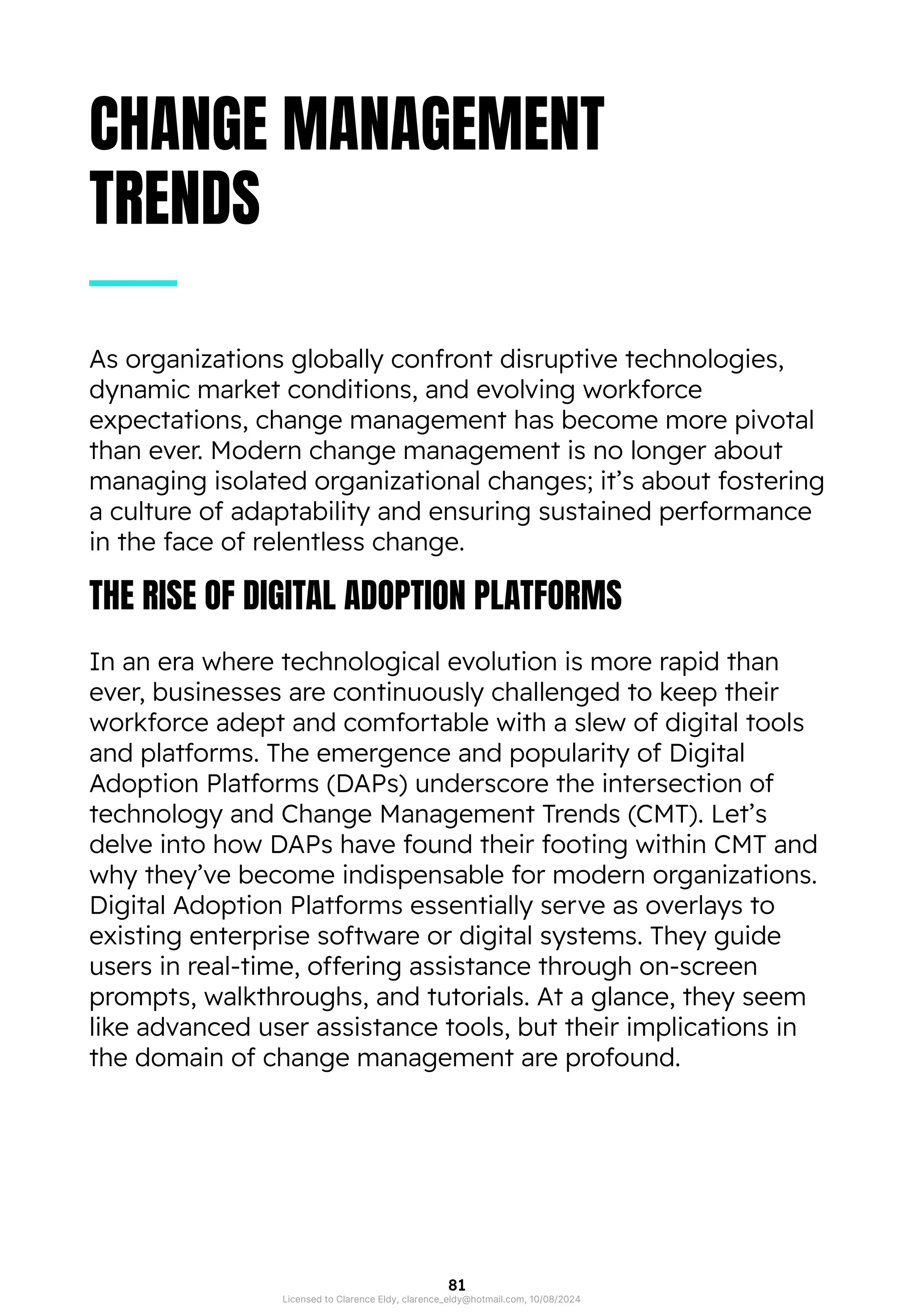The document outlines the importance of change management in organizations, emphasizing that successful adaptation to change requires a structured approach to guide teams through transformations. It highlights various change management models and strategies, such as Lewin’s change model and Kotter’s 8-step process, that help organizations navigate their unique challenges while fostering employee engagement and minimizing resistance. The text serves as a comprehensive guide to understanding and effectively implementing change management practices in a constantly evolving business landscape.
